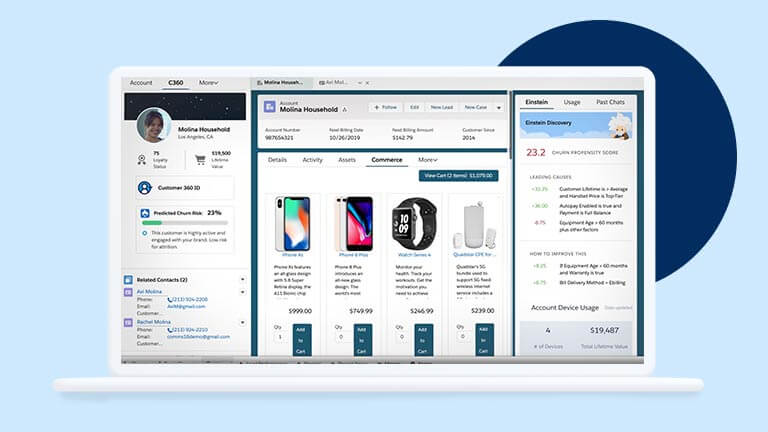Finding the Competitive Edge
for Competitive Local Exchange Carriers
Understanding key players in the mix: A Quick Overview of CLECS and ILECs
In the world of telecommunications, Competitive Local Exchange Carriers (CLECs) and Incumbent Local Exchange Carriers (ILECs) are both important players.
CLECs provide local exchange services in competition with ILECs but typically lease network elements from ILECs, such as copper lines and fiber optic cables, and then resell these services to businesses and consumers. ILECs, on the other hand, are the original local exchange carriers in a given area. They typically own and operate their own network infrastructure, and they are not subject to the same regulatory restrictions as CLECs.
Here are a few examples of well-known CLECs and ILECs:
➢ AT&T: AT&T is a major ILEC, but it also operates as a CLEC in some markets.
➢ Lumen Technologies: Lumen Technologies is another major ILEC that also operates as a CLEC.
➢ Verizon: Verizon is a major ILEC that does not operate as a CLEC.
➢ Windstream: Windstream is a major CLEC.
➢ Frontier Communications: Frontier Communications is a major CLEC.
CLECs play a key role in the market by offering lower prices and more innovative services. ILECs, on the other hand, typically have a more extensive network footprint and can offer more comprehensive services.
Here are the primary main differences between CLECs and ILECs:
1. Ownership of network infrastructure: ILEC’s own the network infrastructure, whereas CLECs are a tier-two local exchange carrier that purchases services from the ILEC at a wholesale cost and utilizes the ILEC’s network to provide services to the local marketplace.
2. Regulatory treatment: CLECs are subject to more regulatory restrictions than ILECs.
3. Pricing: CLECs typically offer lower prices than ILECs.
4. Innovation: CLECs are often more innovative than ILECs.

The importance of CLECs and ILECs has changed over time. In the early days of the telecommunications industry, ILECs were the dominant players. However, the passage of the Telecommunications Act of 1996 opened up the market to competition from CLECs. This led to a period of rapid growth for CLECs, as they began to offer a wider range of services and lower prices than ILECs.
In recent years, however, the growth of CLECs has slowed. This is partly due to the consolidation of the telecommunications industry, as larger companies have acquired smaller CLECs. Additionally, new technologies, such as wireless and cable internet, have created new competitors for CLECs.
Despite these challenges, CLECs continue to play an important role in the telecommunications industry. They offer a valuable alternative to ILECs for businesses and consumers looking for lower prices and more innovative services. Additionally, CLECs can help to drive innovation in the telecommunications industry by challenging the status quo and pushing ILECs to re-evaluate and oftentimes improve their offerings.
Top Industry CLEC Pain Points & Challenges
While CLECs may be able to position their services at a better price point, competitively, they still face several challenges compared to ILECs.
From speaking with key industry stakeholders, below are some of the top industry challenges and pain points that CLECs are facing today:
- Lack of visibility into customer data. CLECs often have a fragmented view of their customers, with data scattered across different systems. This makes tracking customer interactions difficult, identifying opportunities, and providing personalized service.
- Inefficient sales processes. CLECs’ sales processes can be slow and inefficient, leading to lost opportunities. They may not have a centralized CRM system, or their CRM system may not be integrated with other systems, such as their billing system. This can make it difficult to track leads, manage opportunities, and close deals.
- High churn rate. CLECs often have a high churn rate, meaning that customers are leaving their service for a competitor. This can be due to a number of factors, such as poor customer service, lack of competitive pricing, or a lack of innovation.
- Competition from larger carriers. CLECs face stiff competition from larger, more established carriers. These carriers have more resources and can offer lower prices. CLECs need to find ways to differentiate themselves and compete on value.
- Disparate systems and lack of analytics. CLECs organic growth over time can lead to multiple, disparate systems and ultimately a lack of streamlined analytics across the business. This can create additional challenges for CLECs who are considering acquisition opportunities, as they cannot provide a centralized view into key data such as forecast and revenue metrics.
With the challenges listed above, CLECs are going to be looking for every advantage that they can find to improve their chances of driving increased revenue and delighting their customers. As a Salesforce Partner, it only makes sense that we share some ways you could leverage Salesforce to level the playing field.
First and foremost, Salesforce’s industry-specific Cloud, Communications Cloud, is a suite of cloud-based solutions with a big focus on Sales and Service that can help CLECs improve their revenues and customer satisfaction. The cloud-based solutions integrate with existing communication systems and applications, simplifying the management of customer interactions across multiple channels.
Here are some specific ways that CLECs can leverage Salesforce’s Communications Cloud:
- Increase sales: Salesforce’s Communications Cloud can help CLECs increase sales by providing a more efficient and effective sales process. This can be done by providing sales reps access to real-time customer data and automating tasks such as lead generation and qualification.
- Simplify and streamline quoting: The quoting process can be highly complex and time-consuming due to the complexity of the solution. Salesforce Communications Cloud centralizes the product catalog and streamlines the quoting process through an advanced CPQ interface.
- Improve customer service: Salesforce’s Communications Cloud can help CLECs improve customer service by providing a single view of the customer across all channels. This allows CLECs to provide more personalized and timely service to their customers.
- Reduce churn: By providing service agents with a single view of the customer and an omnichannel experience, as well as equipping customers with self-service options, service issues can be addressed faster than ever.
Gain insights: Salesforce’s Communications Cloud can help CLECs gain insights into their customers and business. This can be done by analyzing customer data and by tracking customer behavior.

Here are some additional benefits of using Salesforce’s Communications Cloud in contrast to other Sales and Service applications:
→ Scalability: Salesforce’s Communications Cloud is scalable, so CLECs can easily add or remove users and services as needed.
→ Security: Salesforce’s Communications Cloud is secure, so CLECs can be confident that their customer data is protected.
→ Support: Salesforce offers comprehensive support for its Communications Cloud, so CLECs can get help when needed.
Aside from Communications Cloud, here are some additional Salesforce products and features to help CLECs solve some of these significant industry challenges and pain points.
- Salesforce Sales Cloud can help CLECs improve their visibility into customer data by providing a centralized CRM system. This system can be integrated with other systems, such as billing and marketing, to provide a complete view of the customer.
- Salesforce Service Cloud can help CLECs improve their customer service by providing a platform for managing customer interactions. This platform can track customer issues, resolve problems, and provide proactive support.
- Salesforce Marketing Cloud can help CLECs improve their marketing campaigns by providing a platform for creating, managing, and tracking marketing messages. This platform can target customers with relevant messages and measure campaign effectiveness.
- Salesforce Experience Cloud can give CLEC’s the ability to offer their customers a personalized portal that will promote self-service capabilities for their customers, including the ability to submit a trouble ticket, access FAQs, chat with an agent, etc. We have seen a growing self-service trend within the Telecommunications industry as they seek to ease the burden on call centers and drive efficiencies.
By leveraging industry-first solutions, CLECs can improve their visibility into customer data, streamline their sales processes, reduce churn, and compete more effectively with the larger ILEC carriers.

Building Trust Starts With A Conversation.
If you are a CLEC looking for a way to improve your revenues and customer satisfaction, reach out to V2 today and schedule a call with our Industry experts who have worked through many Salesforce platform enhancements specifically for Communications and Telecommunications companies.


